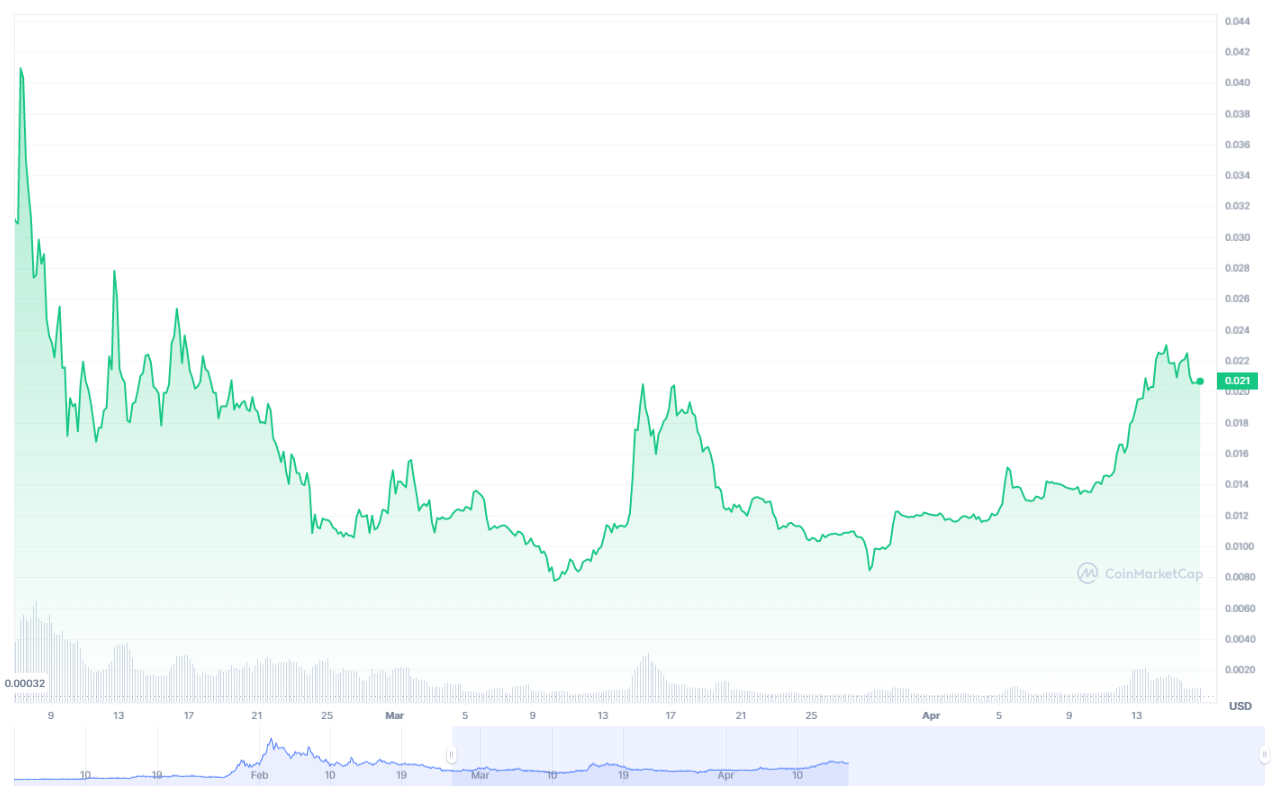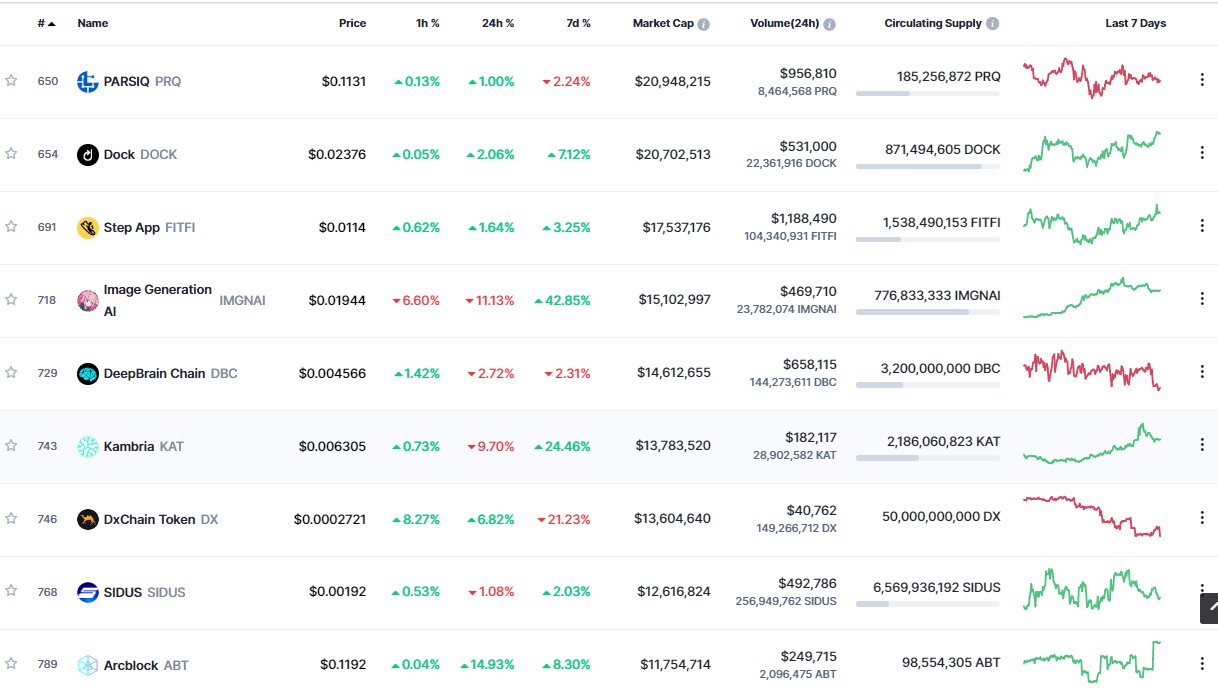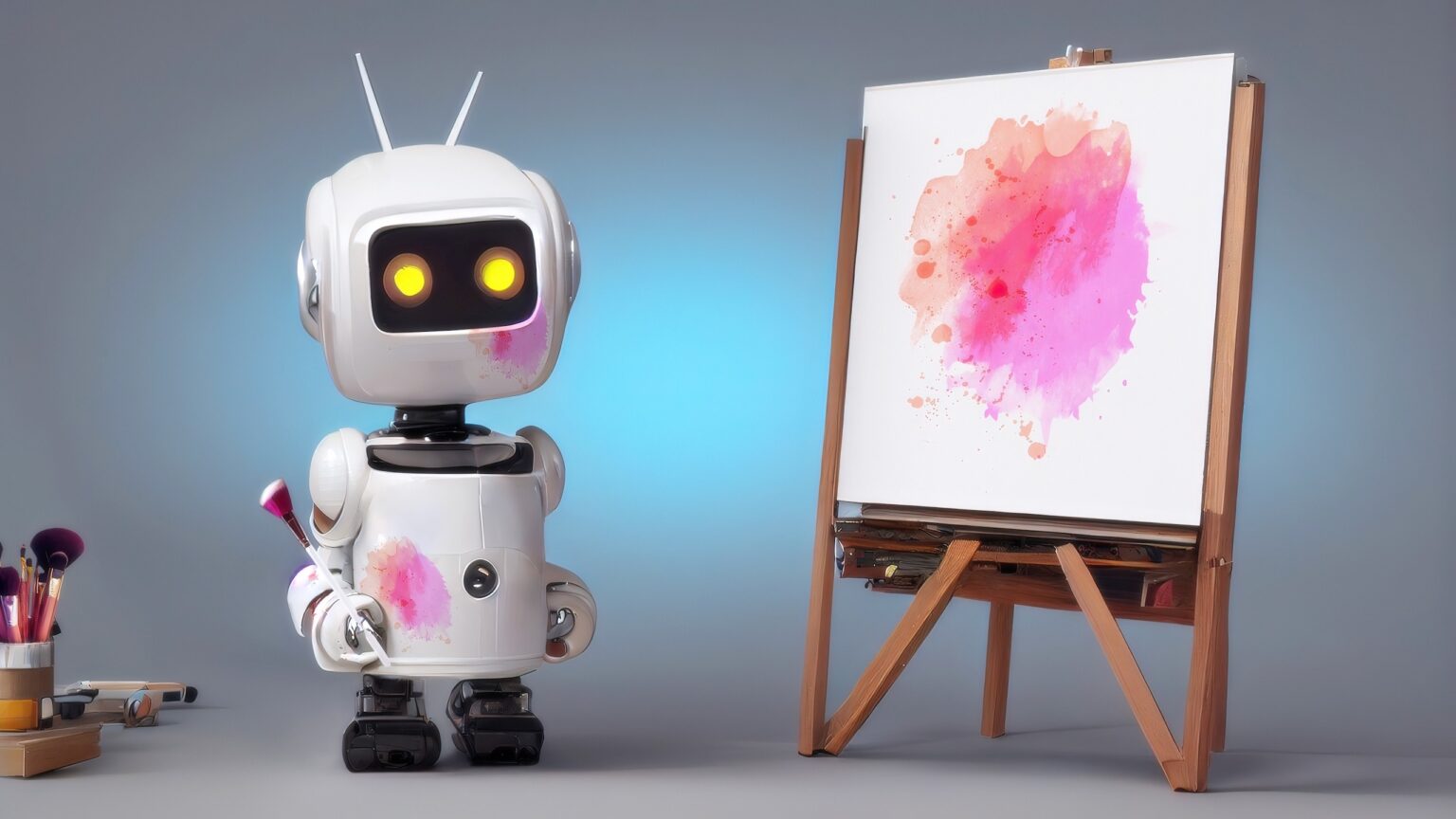AI image generator token IMGNAI has soared by over 6,000% this year due to a rise in the use of AI to solve personal and professional problems as well as create images from voices and words.
AI image generator Image Generation artificial intelligence (AI)‘s novel token IMGNAI has been on an uptrend this year.
As of 14:00 UTC on April 16, IMGNAI had brought around 6,440% year-to-date (YTD) gains to holders of the crypto asset, and was exchanging hands for $0.02079.
Despite not being a top ten AI or big data token by market capitalization and having the support of just seven centralized and decentralized exchanges (Bitget, Uniswap, Poloniex, XT.COM, MEXC Global, LBank, and Hotbit), IMGNAI’s relatively lower daily trading volumes have propelled the token to new milestones in the first four months of 2023.
Thriving on the rebound of the blockchain-powered economy, the AI-backed digital currency opened the year with a trading price of $0.0003177 and closed Q1 on March 31 at $0.01212, a 3,714.92% rise in 90 days.

February rally drives monster spike
Image Generation AI has been regularly featured on lists of the best image generation tools. Unfortunately, the achievements of its novel token have been largely unreported over the past few months.
Thriving on the impact of ChatGPT and other AI-powered innovations, February saw a rally in most AI-backed tokens such as SingularityNET (AGIX) and Fetch.ai (FET).
IMGNAI took advantage of the positive market sentiment and shot up by 17,366.2% from $0.0003177 on the opening day to a quarterly high price of $0.05549 on February 2.
The rise of AI Image generators
AI image generators have been trending this year, with users sharing their experiences on social media. Tools like Image Generation AI have made it possible for millions of people to produce quality visual content in a matter of seconds.
ChatGPT, meanwhile, has made life easier for millions of students and professionals required to write content. While graphic designers and novice creators have begun to leverage AI image generators.
Aside from Image Generation AI, some of the most sought-after AI image generators include but are not limited to Lensa AI, AI Time Machine, Stable Diffusion, Images.ai, Photosonic, Craiyon, Fotor AI Image Generator, Artbreeder, BigSleep, Deep AI, Deep Dream Generator, Pixray, Synthesys X, DALL-E, Nightcafe, Dream by Wombo, Starry AI, and Jasper Art.
The NFT industry largely thrives on images and global NFT market sales crossed $50 billion this year. Although there have been few forecasts made about the image generation market, the power of images in the development and expansion of Web3 could see this industry grow rapidly.
IMGNAI climbing AI token market ladder
IMGNAI was ranked in the top 40 AI and big data tokens by market capitalization. The token controls 0.23% of this market and commands a higher market value than DeepBrain Chain (DBC), Kambria (KAT), and Swash (SWASH) among others.
While the project trails Injective (INJ), Render Token (RNDR), Oasis Network (ROSE), The Graph (GRT), and SingularityNET (AGIX), only time will tell if IMGNAI will break out and become one of the main AI tokens available.










 and then
and then